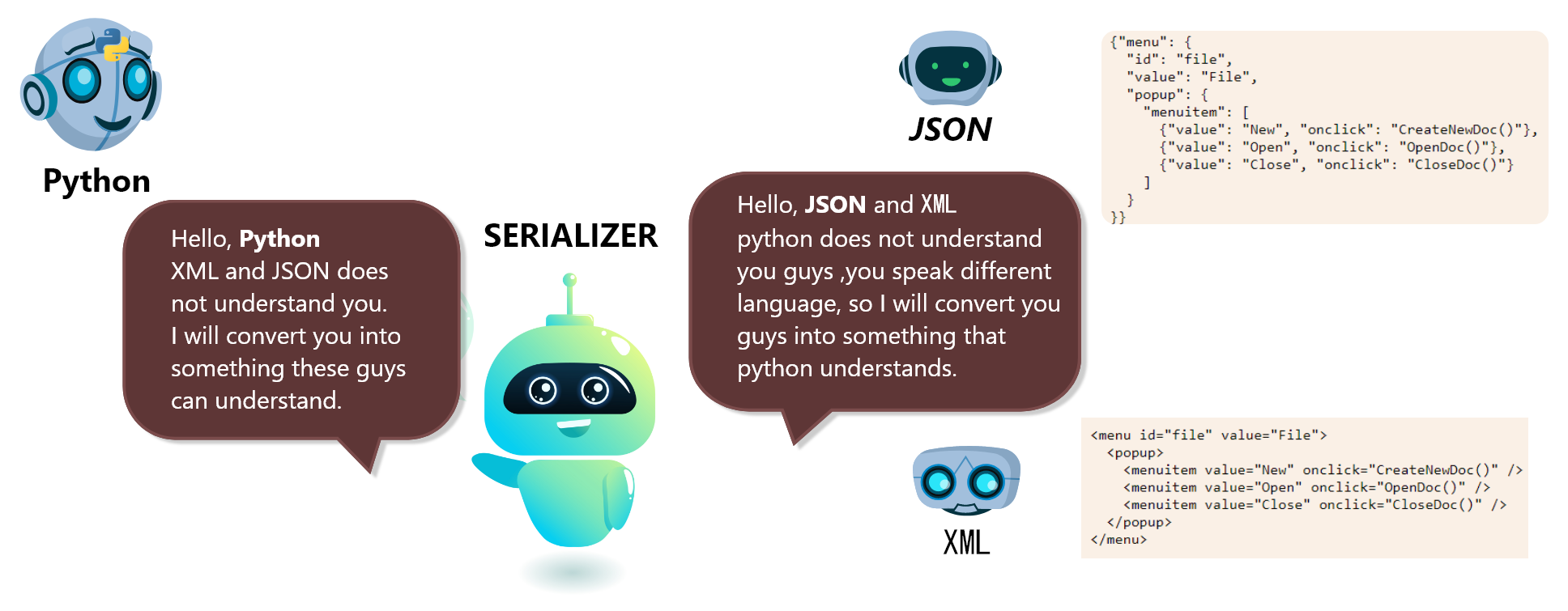Django Rest Framework Function Based Views
 Rest framework provides simple set of decorators for regular Django function to wrap around, allowing function to receive the instance of Request (rather than the django HttpRequest) and return Response (instead of Django HttpResponse ) whereas Class-based views contains APIView which is a sub class of Django view.
Rest framework provides simple set of decorators for regular Django function to wrap around, allowing function to receive the instance of Request (rather than the django HttpRequest) and return Response (instead of Django HttpResponse ) whereas Class-based views contains APIView which is a sub class of Django view.
GitHub-Link For Project :
https://github.com/ShivaBsnt/DjangoRestFramework.git
Let’s make model, URL, serializer and quickly jump straight to the views.
Model
1
2
3
4
5
6
7
8
from django.db import models
class Student(models.Model):
first_name = models.CharField(max_length=10)
last_name = models.CharField(max_length=10)
email = models.EmailField()
age = models.PositiveSmallIntegerField()
number = models.CharField(max_length=15)
Serializer
1
2
3
4
5
6
7
8
9
from django.db import models
from rest_framework import serializers
from Common.models import Student
class StudentSerializer(serializers.ModelSerializer):
class Meta:
model = Student
fields = "__all__"
URL
1
2
3
4
5
6
from django.urls import path
from .views import get_post_student
urlpatterns = [
path('student/', get_post_student, name='student'),
]
Function Based Views
Now, we will use function based view to get and create a student.
1
2
3
4
5
6
7
8
9
10
11
@api_view(['GET', 'POST'])
def get_post_student(request):
if request.method.lower() == 'get':
serializer = StudentSerializer(Student.objects.all(), many=True)
return Response(serializer.data)
if request.method.lower() == 'post':
serializer = StudentSerializer(data=request.data)
serializer.is_valid(raise_exception=True)
serializer.save()
return Response(serializer.data)
Let’s break each line of code to understand what our views does.
@api_view(['GET', 'POST'])
The api_view decorator in this code is accepting a list of methods that view should respond to. The function get_post_student will only accept GET and POST request in this case.
Note: By default the api_view will only accept a get request. If we do not provide any http methods then the function responds to only get methods. It means that writing api_view() and api_view([‘GET’]) is same.
1. GET
if request.method.lower() == 'get':
Since the function accepts both GET as well as POST request, so we are checking the methods before performing any action.
serializer = StudentSerializer(Student.objects.all(), many=True)
StudentSerializer has been used as a serializer for Student objects. It allows complex data types such as queryset to be easily converted into JSON, XML or other content types.

What the heck is serializer? Why do we even need serializer? Confused right? No problem let’s look at the figure below.

JSON and XML is not understood by python directly. So they need to go through serializer to get converted into python native data types. Similarly python native data types is also not understood by JSON or XML so they need to be also converted into their own format. In lay man term, serializer converts the data types from one format to another and validates the incoming data from JSON, XML or any other format.
Have you noticed that we have used many=True above? It is because Student.objects.all() returns a queryset. Queryset is nothing but a list of objects.
<!-- Importing Student model and getting all of its object -->
>>> from Common.models import Student
>>> Student.objects.all()
<!-- result of above orm -->
<QuerySet [<Student: Student object (2)>]>
>>>
Since Student.objects.all() does not return a single object, it returns a list of objects therefore many is set to True.
return Response(serializer.data)
Here, the data received from serializer is dictionary which is further converted into format like JSON or XML and then returned to an end from where it is requested.
2. POST
if request.method.lower() == 'post':
Like get request, request method is checked here to carry any further action.
serializer = StudentSerializer(data=request.data)
The data received from front end is sent through serializer for validation. It checks whether the data required for backend matches the frontend data request.But validation does not runs here.
serializer.is_valid(raise_exception=True)
The validation starts once is_valid() method is called. The raise_exception=True raises a validation error and returns suitable response if validation does not matches. For e.g our model Student has got field age which is an integer. If request sent has got an age in float or string then our validation does not matches and serializer throws an exception.
serializer.save()
The data validated from serializer gets saved here to database. The serializer returns an instance of validated object which is saved here.
return Response(serializer.data)
This line sends a data saved to database with suitable response.
<———————— HAPPY CODING ————————>





Leave a comment